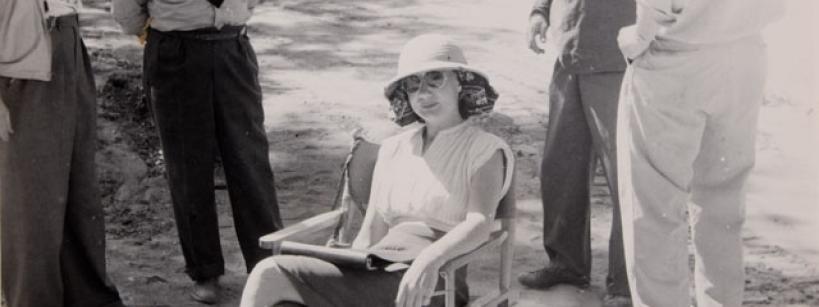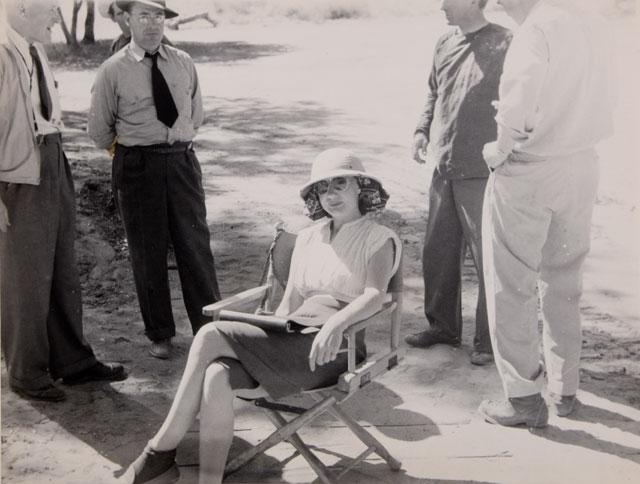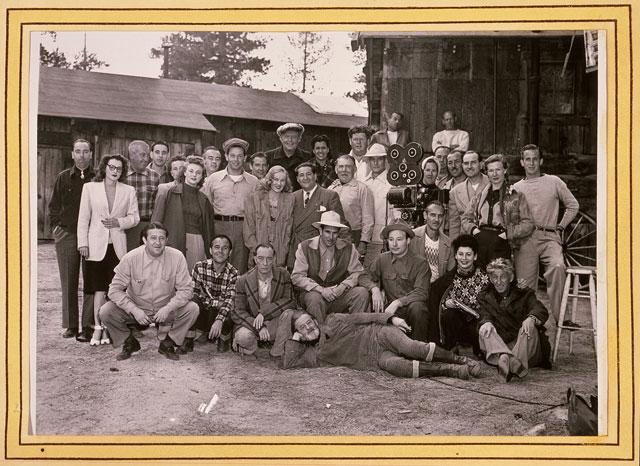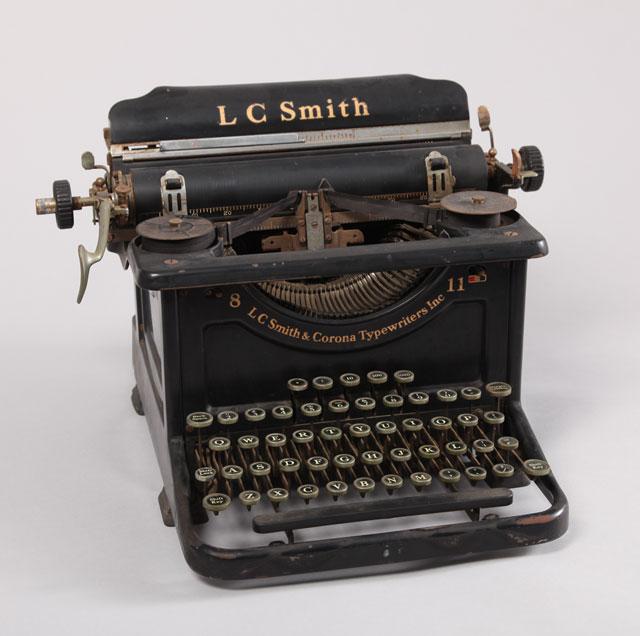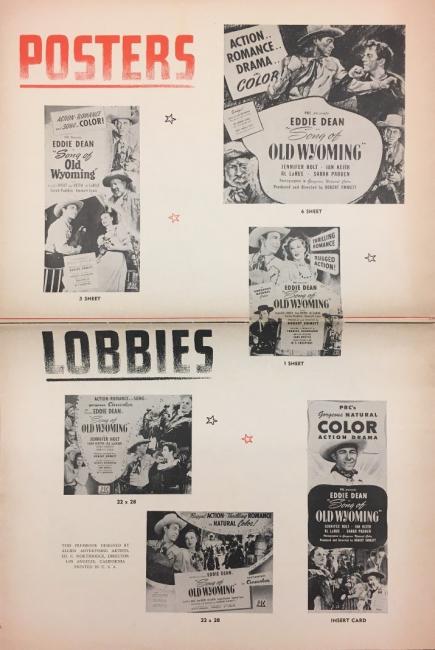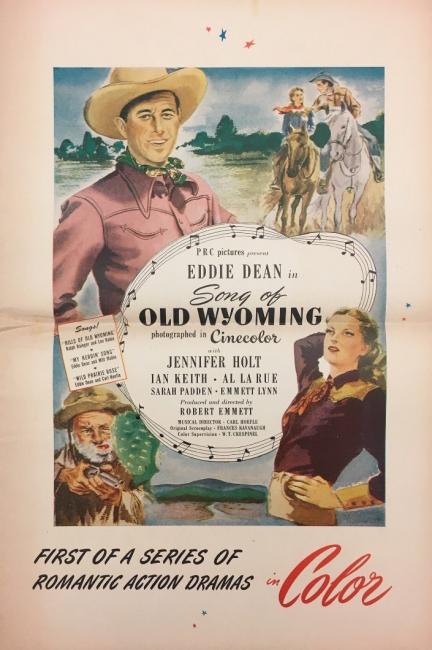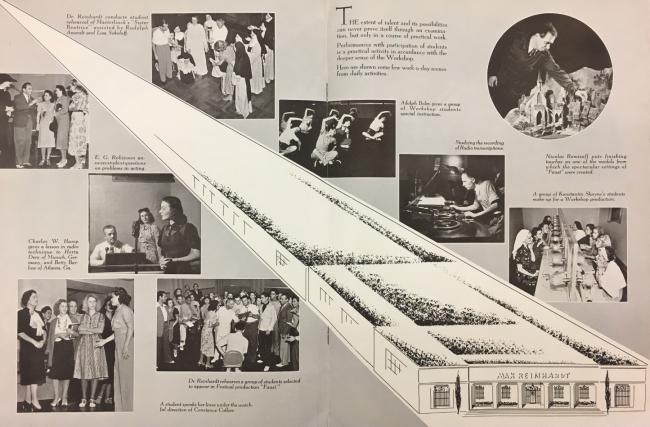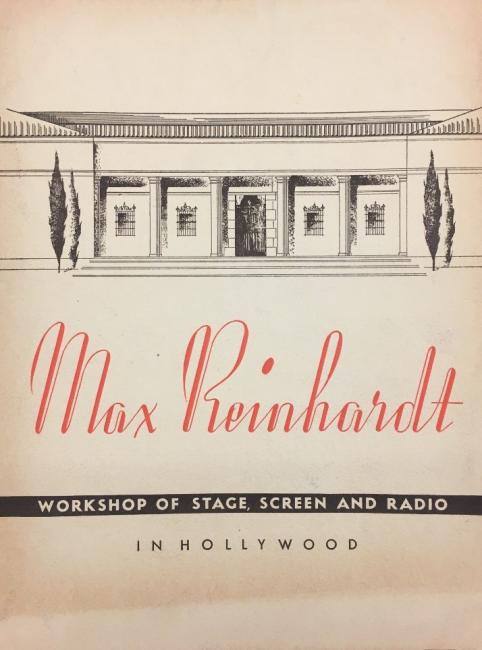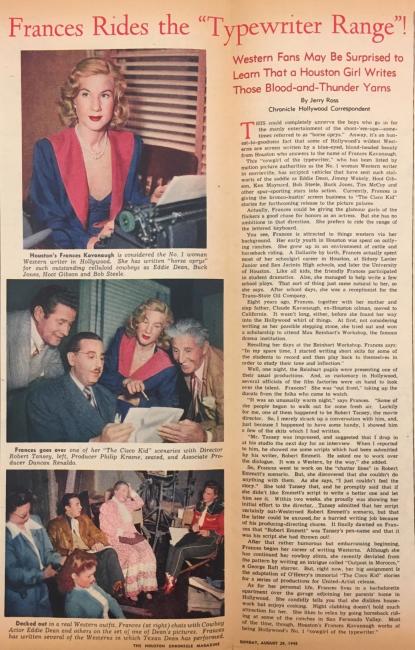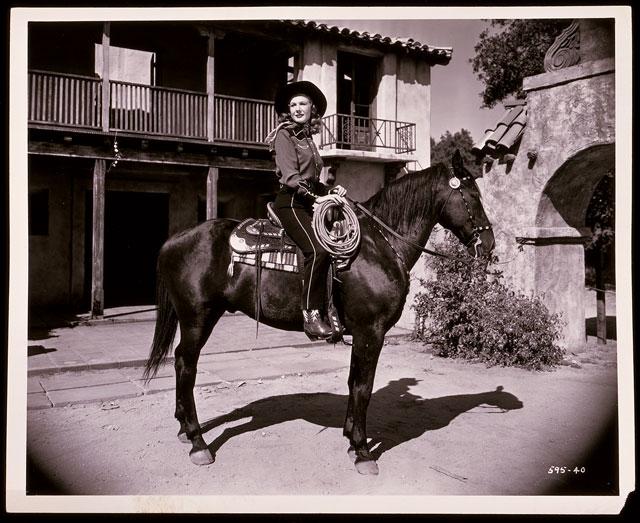Another item from the collection is a pamphlet that doesn’t seem too connected to Westerns. That is a pamphlet from the Max Reinhardt Studio. Kavanaugh grew up in Houston, where she was immersed in ranch culture and first experienced her lifelong love of riding. She moved to Los Angeles with her parents in 1940, and began taking classes at the Reinhardt Studio, further pursuing her high school interest in theater. One night outside that studio she met director Robert Tansey, who invited her to interview and offered her a job polishing scripts. When she criticized the script she was given, Tansey challenged her to write a better one. And she did. In the next decade, she worked on over thirty productions writing scripts and scenarios.
Kavanaugh-Hecker, as a screenwriter, was still often pushed to the background. Her clippings often circle the names of her colleagues in noting a production of which she was a part. The brightly printed press kits from films including Song of Old Wyoming and Romance of the West don’t feature her face or often even her name, but she held the reins of the action-packed story that made its way to the silver screen.
Articles of the era, like that of the Houston Chronicle Magazine, painted Kavanaugh as a contradiction to the Hollywood norm and that of the West. Yet the West is remembered as a place where women could fill alternate roles. The 1940s were also a time when women left the domestic sphere and took charge of their lives. Kavanaugh is an emblem of that. She grew up around cowboy culture, riding horses as a young woman in Texas. She took that love and knowledge of a male-centered culture and made her mark on Hollywood – from behind the keyboard.
Images:
Photograph of Frances Kavanaugh on set from unidentified film, 1940s. Autry Museum; 97.110.13 [http://collections.theautry.org/mwebcgi/mweb.exe?request=record;id=M561616;type=102]
“Frances Rides the ‘Typewriter Range’!” Houston Chronicle Magazine, August 29, 1948. Autry Museum; MSA.29, Folder 9
Cover to Max Reinhardt Workshop of Stage, Screen and Radio in Hollywood pamphlet, circa 1940. Autry Museum; MSA.29, Folder 2
Inside pages of Max Reinhardt Workshop of Stage, Screen and Radio in Hollywood pamphlet, circa 1940. Autry Museum; MSA.29, Folder 2
Song of Wyoming advertisement from studio press kit, circa 1941-1947. Autry Museum; MSA.29, Folder 9
Song of Wyoming advertisement for movie posters and lobby cards from studio press kit, circa 1941-1947. Autry Museum; MSA.29, Folder 9
Black manual typewriter, made by L.C. Smith, circa 1935. Autry Museum; 97.149.1 [http://collections.theautry.org/mwebcgi/mweb.exe?request=record;id=M527962;type=101]
Photograph of cast and film crew from Action Pictures' GOD'S COUNTRY (1946), starring Robert Lowery, Helen Gilbert, William Farnum, Buster Keaton, and Si Jenks; directed by Robert Emmett Tansey. Frances Kavanaugh is identified as the woman standing second from the right. Autry Museum; 97.110.9 [http://collections.theautry.org/mwebcgi/mweb.exe?request=record;id=M561413;type=102]
Photograph of Frances Kavanaugh on set from unidentified film, 1940s. Autry Museum; 97.110.12 [http://collections.theautry.org/mwebcgi/mweb.exe?request=record;id=M559715;type=102]
